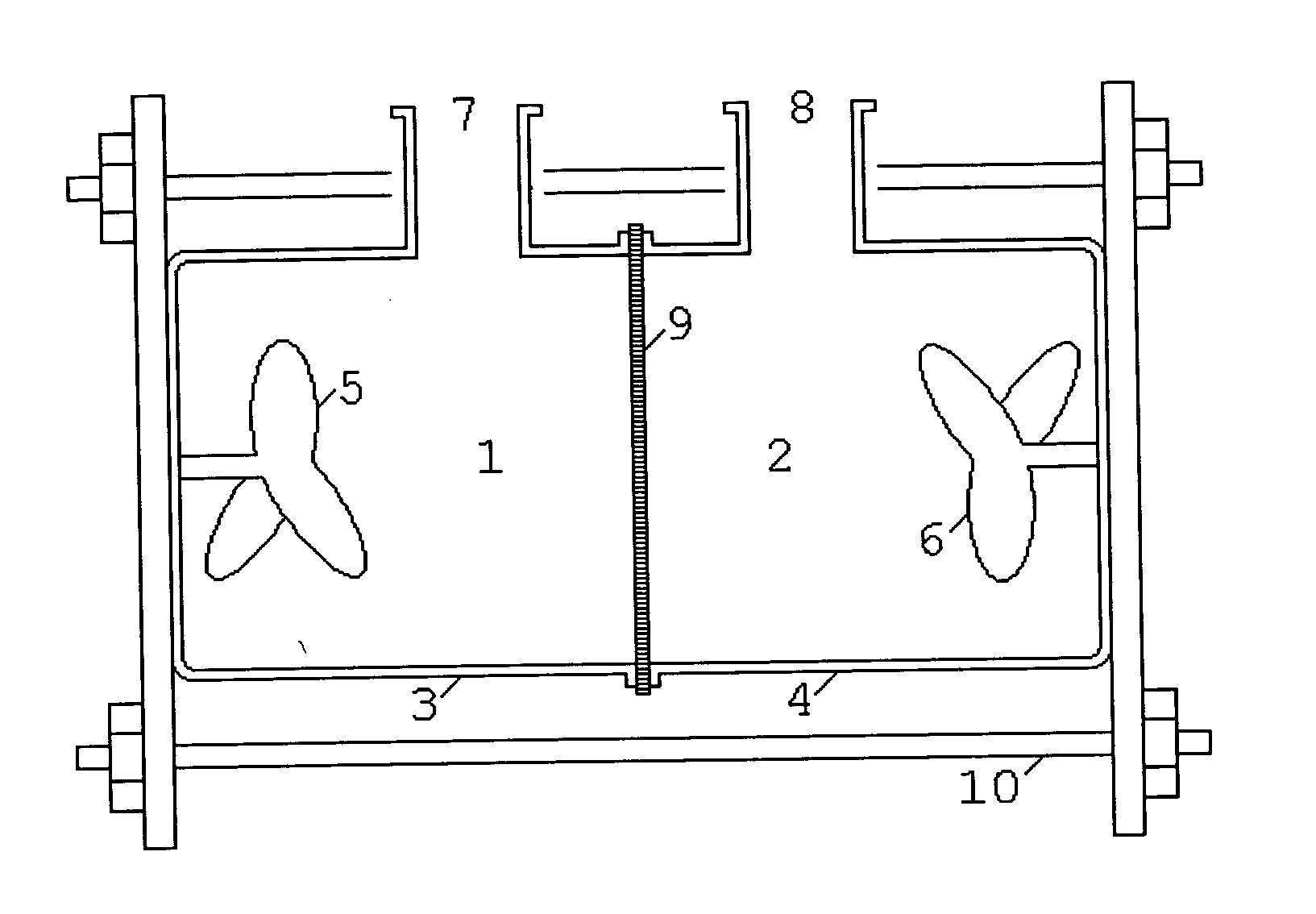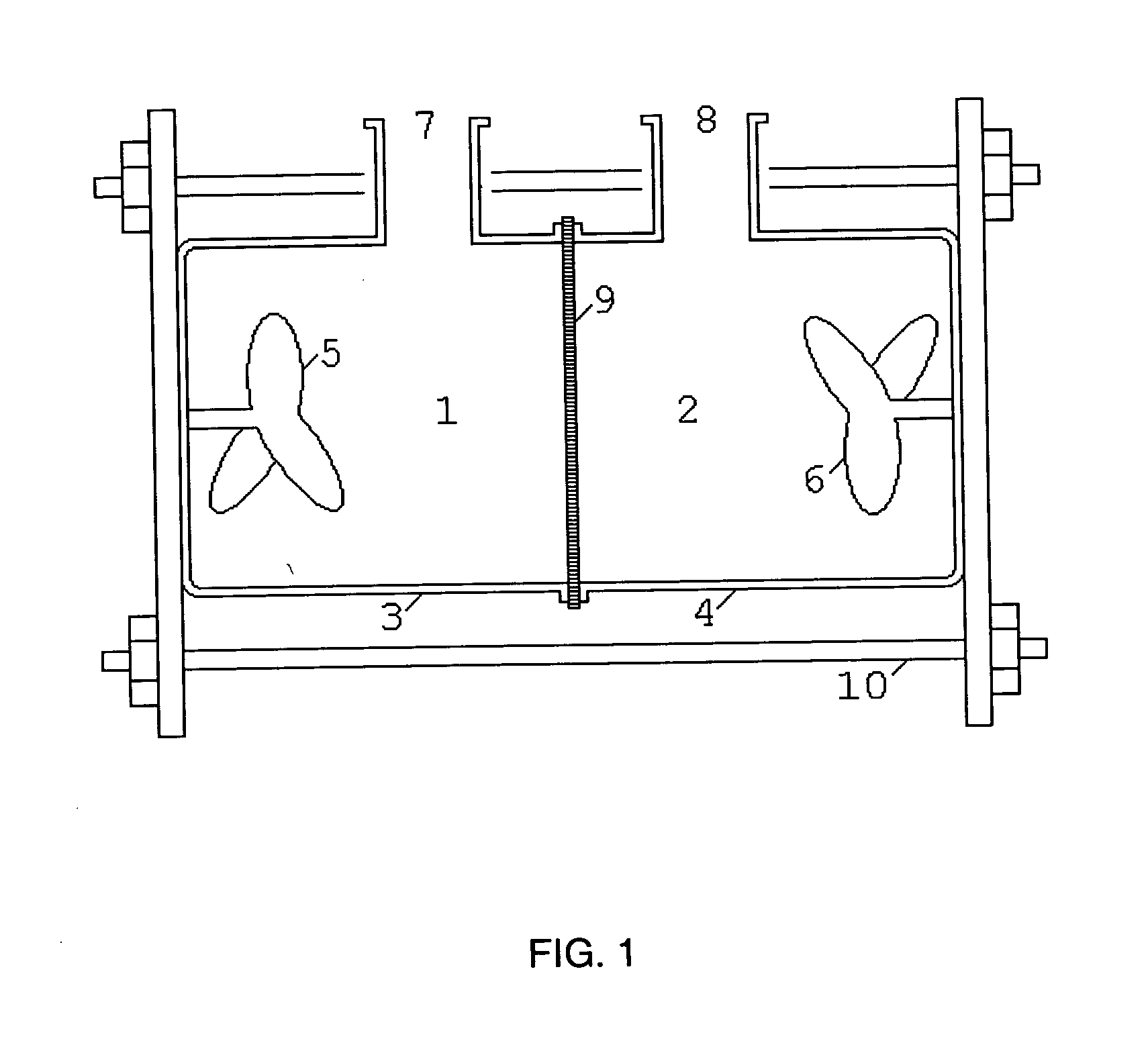Process for the separation of olefins and paraffins
a technology applied in the field of process for the separation of olefins and paraffins, can solve the problems of insufficient separation of olefinic hydrocarbons by conventional distillation techniques, and the ft process is not always selective towards the production of olefins, and achieves the effect of low waste product and high energy efficiency
- Summary
- Abstract
- Description
- Claims
- Application Information
AI Technical Summary
Benefits of technology
Problems solved by technology
Method used
Image
Examples
example 1
[0087] The glass transport cell is assembled as described above. The membrane used is a polycarbonate membrane (Isopore (trade mark) membrane commercially available from Millipore, 290 Concord Rd., Billerica, Mass. 01821, USA, having an average pore diameter of 0.4 μm and a membrane thickness of 10 μm). The ionic liquid composition is a 40% mol solution of silver nitrate (commercially available from Sigma-Aldrich, 3050 Spruce St., St. Louis, Mo. 63103, USA) in 1-butyl-3-methyl-imidazolium nitrate.
[0088] The 1-butyl-3-methyl-imidazolium nitrate is synthesised by addition of an aqueous solution of silver nitrate (0.25 Mol in 100 ml water) to a stirring aqueous solution of 1-butyl-3-methyl-imidazolium chloride (commercially available from Solvent Innovation GmbH, Alarichstraβe 14-16, 50679 TS1342.DOC Köln, Germany) (0.25 Mol in 100 ml water) at room temperature and allowed to react for one hour. The silver chloride formed is removed by filtration over a glass filter (porosity: P4). Th...
example 2
[0092] The glass transport cell is assembled as described above. The membrane used is a polycarbonate membrane (Isopore (trade mark) membrane commercially available from Millipore, having an average pore diameter of 0.4 μm and a membrane thickness of 10 μm). The ionic liquid composition is a 40% mol solution of silver nitrate (commercially available from Sigma-Aldrich) in 1-butyl-3-methyl-imidazolium nitrate. The receiving phase solvent employed is heptane (commercially available from Merck KgaA, Frankfurter Str. 250, D-64293 Darmstadt, Germany) and the feedstock composition is derived from a Fischer-Tropsch synthesis, and has the composition set out in Table 4.
TABLE 4Feedstock composition for Example 2.% wt. of the feedstockCompoundcomposition1-Undecene*11.8Undecane37.61-Dodecene*11.3Dodecane39.3
*contains up to 2 % wt. isomeric impurities based upon the weight of each individual component.
[0093] The average flux of the compounds through the supported ionic liquid membrane over a...
example 3
[0095] The glass transport cell is assembled as described above. The membrane used is a polycarbonate membrane (Isopore (trade mark) membrane commercially available from Millipore, having an average pore diameter of 0.4 μm and a membrane thickness of 10 μm). The ionic liquid composition is a 40% mol solution of silver nitrate (commercially available from Sigma-Aldrich) in 1-butyl-3-methyl-imidazolium nitrate. The receiving phase solvent employed is heptane (commercially available from Merck kgaA) and the feedstock composition is derived from a Fischer-Tropsch synthesis, and has the composition set out in Table 7.
TABLE 7Feedstock composition for Example 3.% wt. of the feedstockCompoundcomposition1-Tridecene*9.3Tridecane44.81-Tetradecene*7.6Tetradecane38.3
*contains up to 2 % wt. isomeric impurities based upon the weight of each individual component.
[0096] The average flux of the compounds through the supported ionic liquid membrane over a 24 hour period is disclosed in Table 8 belo...
PUM
 Login to View More
Login to View More Abstract
Description
Claims
Application Information
 Login to View More
Login to View More - R&D
- Intellectual Property
- Life Sciences
- Materials
- Tech Scout
- Unparalleled Data Quality
- Higher Quality Content
- 60% Fewer Hallucinations
Browse by: Latest US Patents, China's latest patents, Technical Efficacy Thesaurus, Application Domain, Technology Topic, Popular Technical Reports.
© 2025 PatSnap. All rights reserved.Legal|Privacy policy|Modern Slavery Act Transparency Statement|Sitemap|About US| Contact US: help@patsnap.com



